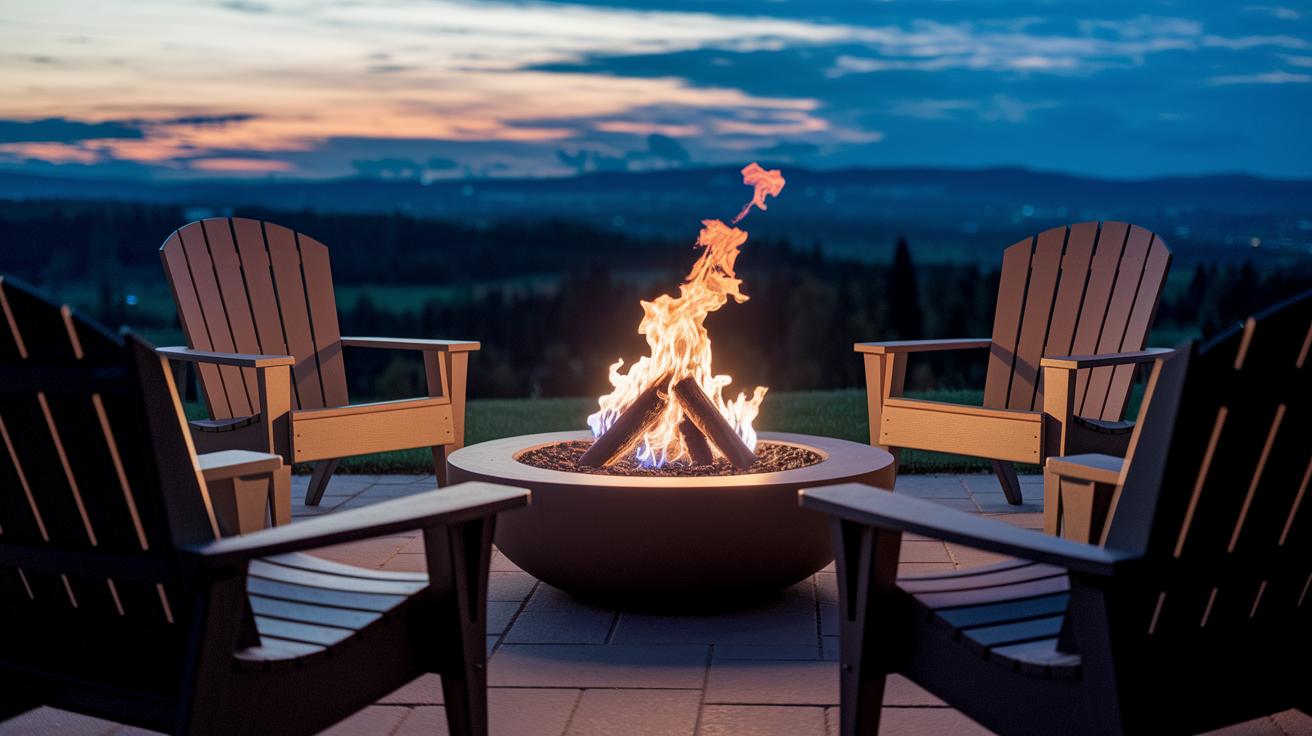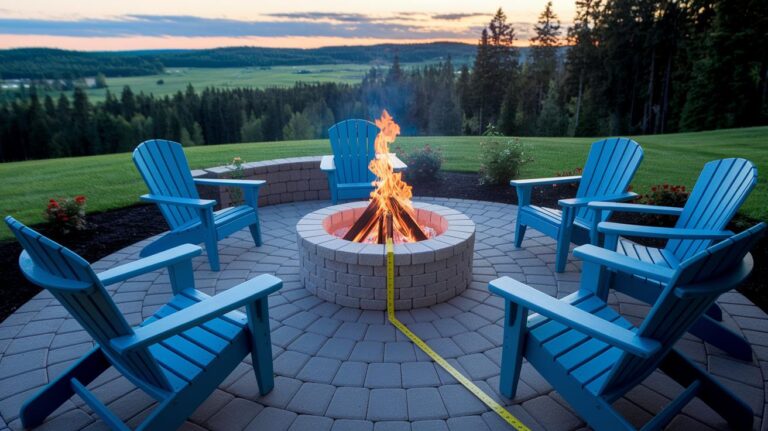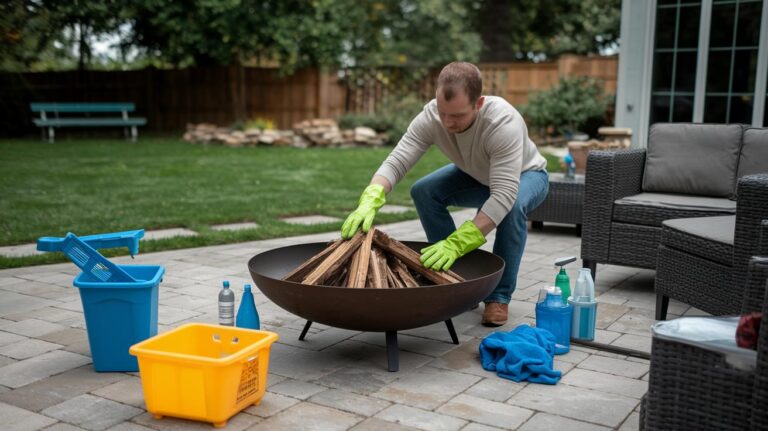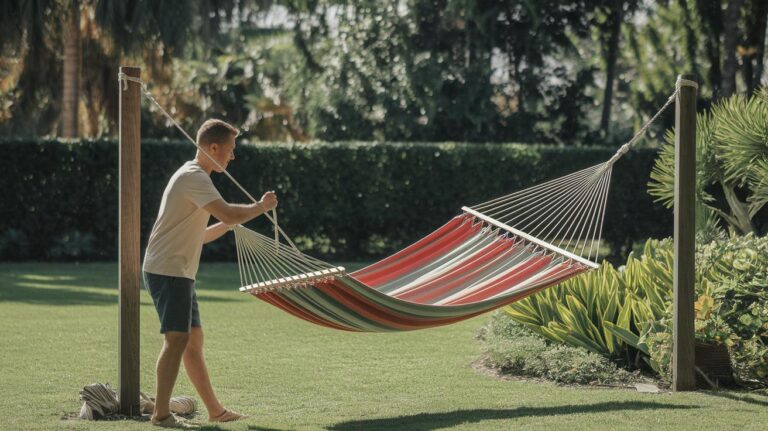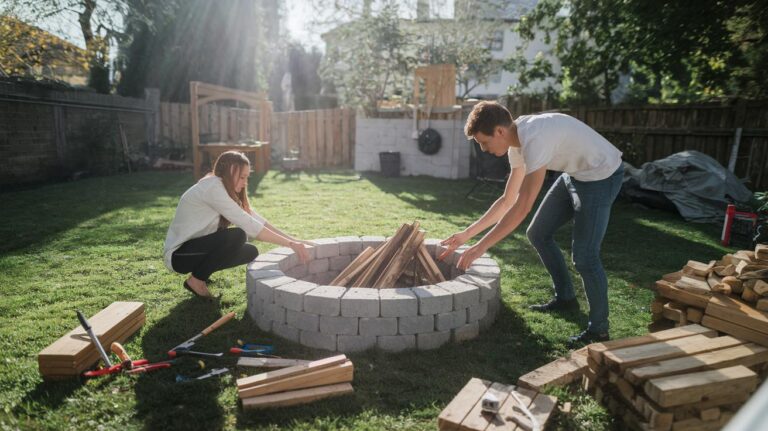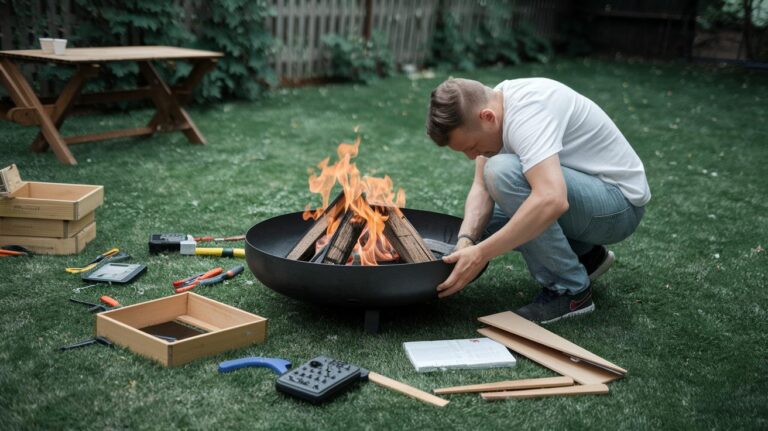How Do Smokeless Fire Pits Work Efficiently
Ever sat by a crackling fire pit, then ended up coughing from drifting smoke? It’s such a downer, right? Smokeless fire pits use smart airflow (how air moves through the pit) and a dual-wall design (two metal layers with a gap) to cut smoke by up to 90 percent. Now you still get that cozy glow and popping embers without a smoky cloud ruining your evening!
So how do they work? Think of tiny air tunnels feeding fresh oxygen to the flames while pushing smoke back inside. The fire burns hotter and cleaner. And your nights stay all about warm laughs, marshmallow roasting, and starry skies.
How Do Smokeless Fire Pits Work Efficiently
You know how a regular fire pit puffs gray smoke that stings your eyes and clings to your jacket? Smokeless fire pits feel like magic out back. They use clever airflow tricks to cut smoke by up to 90 percent. You still get that cozy glow and crackle, but no big smoky cloud drifting in your face.
Ever wondered how smokeless pits tame smoke and boost heat at the same time? It all comes down to smart design and air movement.
Dual-Wall Construction & Venturi Effect
Most smokeless pits have two thin walls – an inner shell and an outer shell – with a small gap between them. Cool air slips in through bottom vents and races upward in that space. That squeeze-and-speed trick is called the Venturi effect (when air speeds up and warms as it flows through a narrow channel). By the time air reaches the flames, it’s already warm. This preheated air helps burning gases and tiny embers light up instead of drifting off as smoke.
Primary Airflow Path
Fresh oxygen feeds the fire through a main air pathway at the pit’s base. You’ll spot little slots or holes around the bottom rim where cool air sneaks in. That steady breeze keeps logs or pellets burning strong. With this constant air boost, the flame never goes hungry, so it burns cleaner and brighter right where you laid the fuel.
Secondary Combustion Cycle & Efficiency Gains
Here’s the fun part. Air warmed between the walls jets out of top vents as superheated streams. When those hot jets hit smoke and gases above the logs, they spark a second burn up high. This extra burn, called secondary combustion (a second chance to burn leftover gases), slashes smoke by as much as 90 percent and uses 30 to 50 percent less wood. You end up with hotter flames, less ash to scoop out, and a fire that lights up cool nights instead of coughing up clouds.
Materials & Durability
Stainless steel (rust-resistant metal) is like that reliable neighbor who never complains. It laughs at rain, snow, and garden sprays, and only asks for a quick wipe now and then to stay shiny. Have you ever felt the cool surface of steel right after a downpour? It’s kind of magical.
Cast iron (heavy metal that holds heat) soaks up fire warmth and gives it back slowly. That means your coals glow longer into the night, perfect for those stories by the fire. Just remember to season (rub cooking oil into the surface to fill tiny pores and block rust) and add a rust-proof coating if salty air or road salt hits your backyard. With a little love, these metals can last for years.
High-temperature paint (paint that stands up to serious heat) sticks around even when flames roll nonstop. And marine-grade finish (coating made to fight off salty air) keeps moisture from turning your pit into a rusty mess. Sand off chips or rough spots, then spray on fresh paint. It’s like a spa day for your fire pit.
If you want extra protection, try a powder coat (dry paint baked onto the surface) or ash-resistant enamel (tough glossy finish that fights ash grit). And hey, tucking your pit under cover or sliding it into storage when winter hits can really stretch its life. When you peek into how smokeless fire pits work, you’ll see these simple touch-ups add years of cozy warmth with almost no fuss.
Practical Use: Fuel, Heat, and Safety
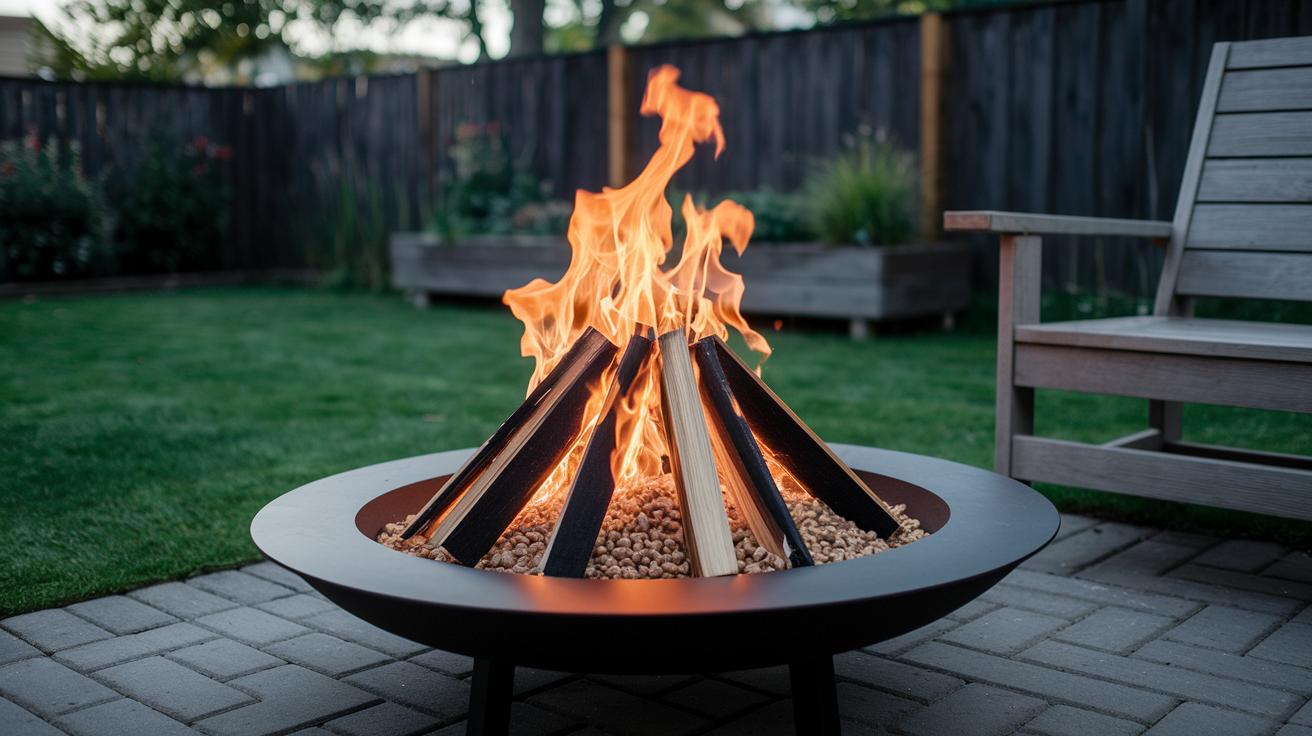
Picking the right fuel and learning how smokeless fire pits work with air and flames can turn your backyard night into a cozy, smoke free gathering. Want to know which fuel burns the cleanest? How to measure real heat? And learn simple safety steps for a worry free fire you’ll love? Let’s dive in.
Fuel Selection and Moisture Considerations
Wood pellets (compressed bits of sawdust) hold no more than 8 percent moisture (water inside the fuel). They light up fast and burn with almost no smoke. Unseasoned logs (wood that still holds water) can carry up to 50 percent moisture and puff out gray clouds before they catch fire. Seasoned hardwood (well-dried oak or maple) might have just 15 to 20 percent water. That gives a steady flame and a nice glowing ember bed. Try adding a small handful of pellets every 10 minutes. Or stack your logs loosely so air can move around. Drier wood means cleaner, hotter flames.
Measuring and Understanding Heat Output
The flames in a smokeless pit can hit 1200°F. That’s super hot! You can check the temp with an infrared thermometer (a tool that reads heat from a distance). Just aim it at the inner wall and you’ll get a live reading. This helps you know if the fire’s hot enough for roasting dinner or too hot for marshmallows. Smokeless pits give more radiant heat (warmth you feel on your skin) than moving warm air. Want to grill? Wait until the thermometer reads about 700°F at the grate level, then slide on your burgers or veggies.
Safety Precautions and Clearance Guidelines
Give your fire pit at least a 5 foot safety zone on every side. Set it on a nonflammable surface like stone or pavers. Keep it away from low branches or deck overhangs. Need extra tips for site prep? Check out how to build an outdoor fire pit.
A spark arrestor screen (a mesh cover that catches hot embers) is a must. Wind can carry smoke toward neighbors or send ashes flying. Arrange your seats and add a low wall to block gusts. Find cool layout ideas in backyard fire pit ideas.
Always keep a fire extinguisher or a bucket of sand close by in case sparks jump out. Safety first, right?
Maintenance
Ever wondered how smokeless fire pits stay so clean? A little weekly care makes them hum and keeps your nights cozy. These pits cut ash by about 70 percent, but they love a bit of attention.
- Scoop out the ash pan (tray that holds spent ash) every week.
- Clear air vents and vent holes (tiny openings that feed air to the fire) with a stiff wire brush.
- Brush the combustion chamber (the wood-burning zone) to knock off leftover soot.
- Wipe the outside with mild soap and water. It’s like giving your pit a quick bath.
- Cover it or stow it away in winter to keep rain and snow from sneaking in and causing rust.
A quick brush of the vent holes and ash removal lets fresh air flow so your flames burn steady. And tucking your pit under cover before cold weather hits keeps moisture out. Keep it dry and you’ll be roasting marshmallows in no time.
Final Words
In the action, we saw smokeless fire pits in full effect: dual-wall construction preheats air via the Venturi effect, feeding superheated jets that slash smoke by 90% and boost fuel use by up to 50%.
We also tackled durable materials and anti-corrosion finishes, plus simple fuel tips, heat-reading tricks, safety clearances, and weekly ash removal for hassle-free upkeep.
Now you know exactly how do smokeless fire pits work, time to spark a cleaner blaze and gather under cozy firelight!
FAQ
How do smokeless fire pits work and what is the science behind them?
Smokeless fire pits feature dual walls that draw in cool air, heating it via the Venturi effect. Hot air jets shoot through upper vents, reburning smoke and gas for a clearer, more efficient flame.
Do smokeless fire pits really work?
Yes. Smokeless fire pits can cut smoke output by up to 90% and boost fuel efficiency by up to 50%, giving you warm, clear flames with less cleanup.
Do smokeless fire pits burn wood faster?
No. They burn wood at a normal pace. Their heated secondary flames use more energy per stick, so logs last just as long but produce far less smoke and ash.
How do I use a smokeless fire pit?
Place the pit on level, nonflammable ground. Fill with dry wood or pellets, light the base fire, then adjust air vents to sustain steady, smokeless warmth.
Can I build a DIY smokeless fire pit?
Yes. Use two metal bowls or a steel insert kit. Drill lower and upper vents for airflow, weld or bolt the walls, and seal gaps to create the Venturi effect.
Where does the smoke go on a smokeless fire pit?
Smoke is drawn into the secondary combustion zone inside the pit. Superheated air jets reburn smoke particles so they exit as invisible gases instead of visible plumes.
What are the disadvantages of smokeless fire pits?
They have a higher upfront cost and require dry, seasoned fuel. They take a minute to reach full heat and may feel less dramatic without tall, smoky flames.

